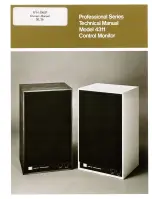
AN2451
Board description
Doc ID 12791 Rev 3
29/55
5.3 Thermal
design
All heat dissipation is based on the heat exchange between the ST7540 IC, the PCB and the
surrounding environment.
A large PCB copper area under the device is recommended to make an easier heat transfer
from the ST7540 to the environment. The metallic slug under the device (exposed pad of
HTSSOP28 package) must be properly soldered to the copper area on the PCB top side, as
recommended in the datasheet.
The large ground layer on the bottom side of the board must be connected to the top side
layer through multiple via holes.
In the case of ST7540 reference design, an area of about 0.2 cm
2
is put on the PCB top side
for exposed pad soldering, while ground layer dissipating area on the bottom side is nearly
1.5 cm
2
.
Figure 23.
PCB copper dissipating area for ST7540 reference design board
Even if the ST7540 features a built-in thermal shutdown circuitry which turns off the power
amplifier (PA) when the die temperature (T
J
) exceeds 170 °C. It is however recommended
not to exceed 125 °C during normal operating conditions to ensure the functionality of the
IC.
The relationship between junction temperature T
J
and power dissipation during
transmission P
D
is described by the following formula:
Equation 7
where T
A
is the ambient temperature (from -45 to +85 °C) and
θ
JA
is the junction to ambient
thermal impedance of the ST7540 IC, which is related to the length of the transmission (t
TX
)
and to the duty cycle d = t
PKT
/ (t
PKT
+ t
IDLE
), assuming a packet-fragmented transmission
as illustrated by
.
Top layer
Bottom layer
Copper
a
re
a
S
oldering
a
re
a
M
u
ltiple Vi
a
Hole
s
L
a
rge GND l
a
yer
T
J
t
TX
d
,
(
)
T
A
P
D
θ
JA
•
t
TX
d
,
(
)
–
=
















































